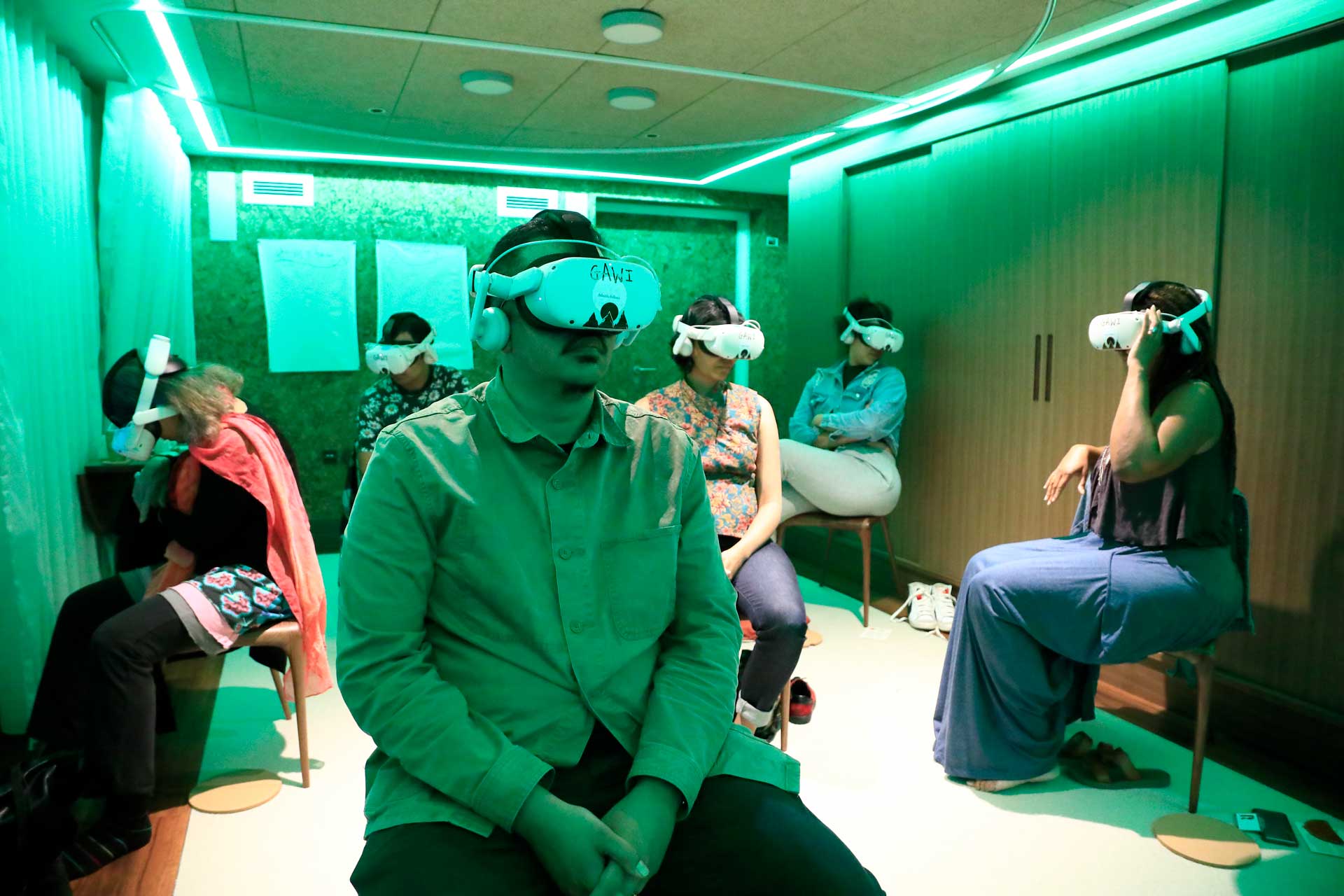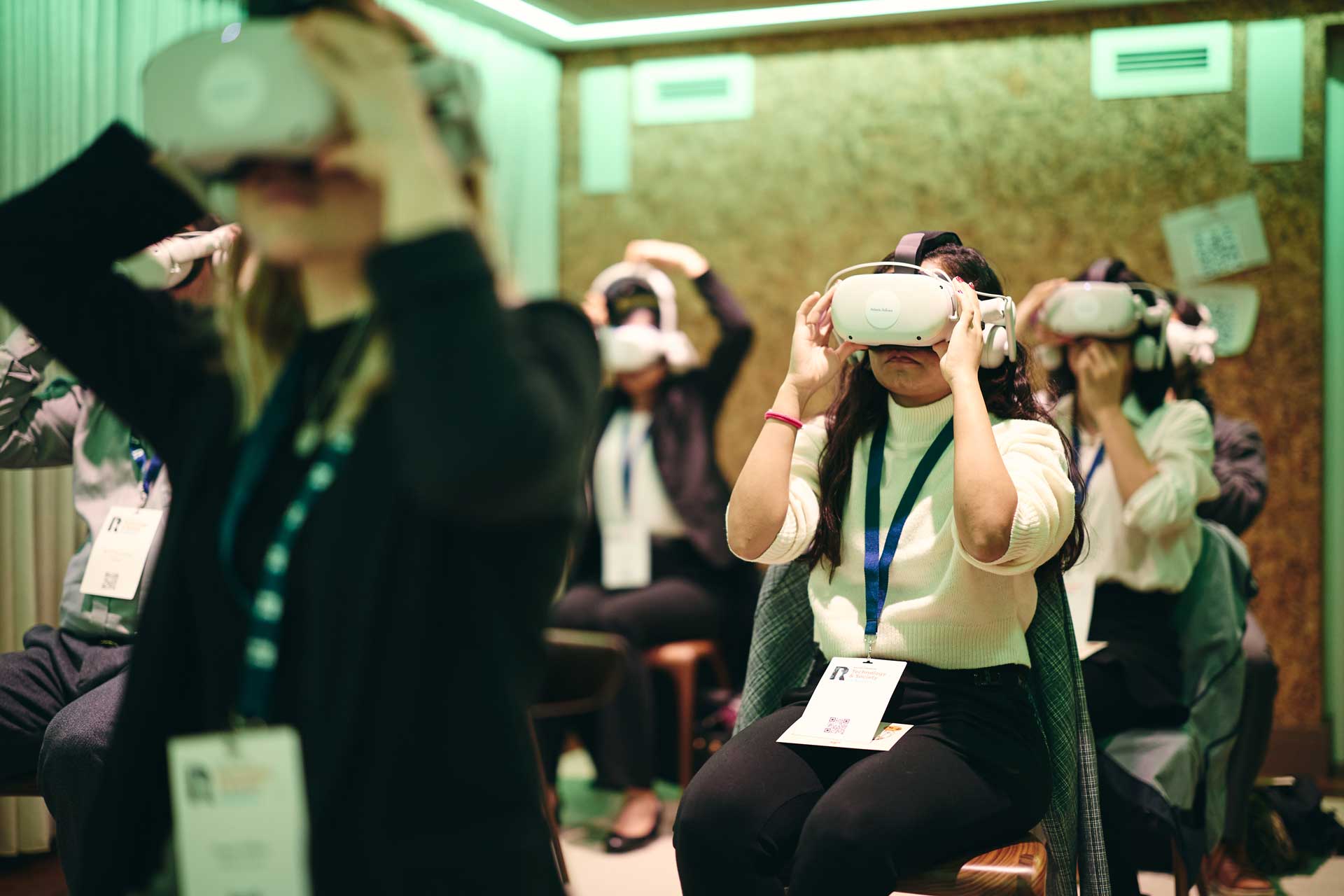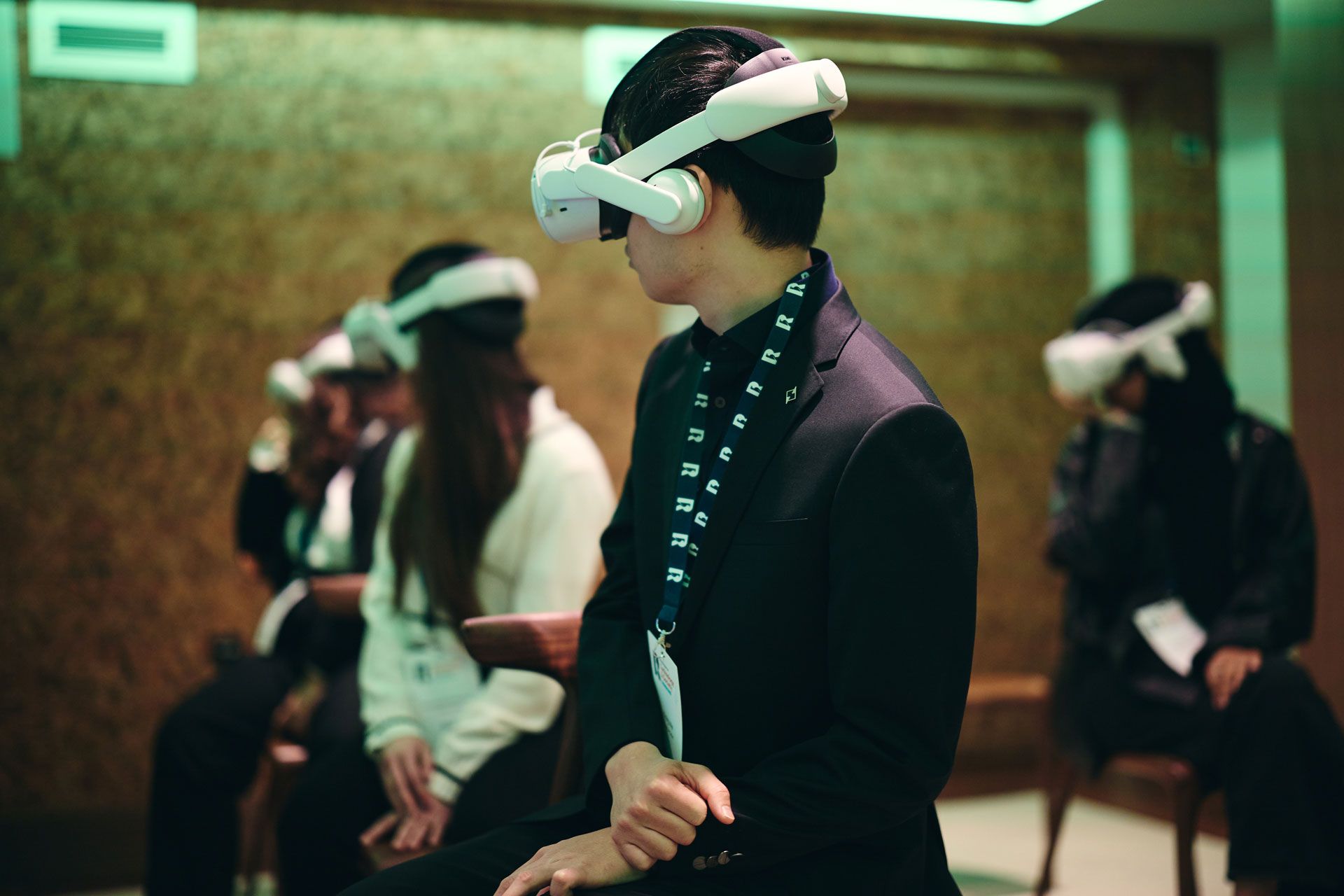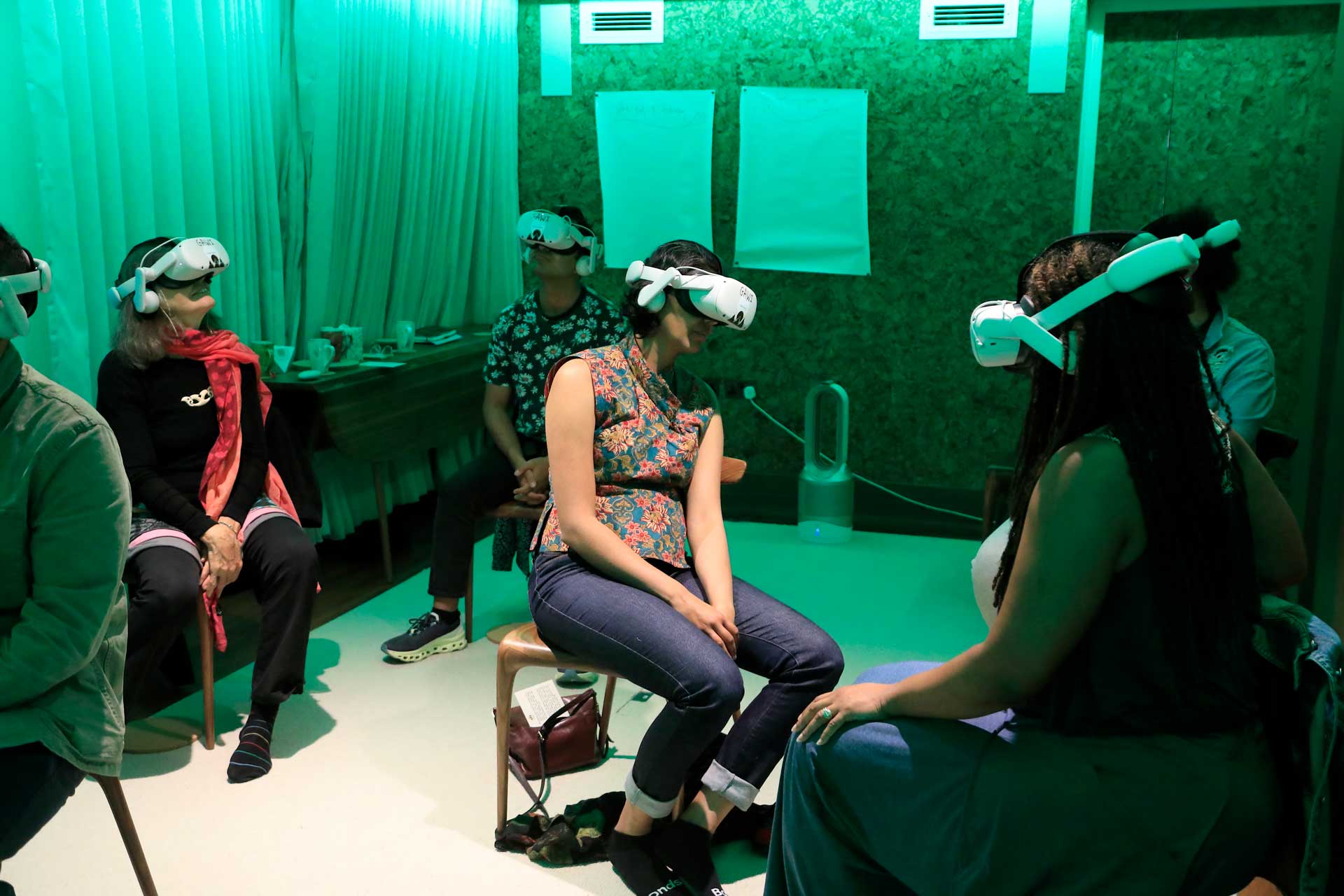VR Welcome Experience for Limina Immersive and the Atlantic Institute
Empowering first time VR users
Zubr was commissioned by Limina Immersive and the Atlantic Institute to create a dynamic VR Welcome Experience which would introduce people, many fairly new to VR, to virtual reality in a way that felt both safe and inspiring. The project goal was to design and develop an introduction to VR which moved beyond simple tutorials and instead create something that would ground and familiarise users with virtual reality both from a conceptual perspective, and in terms of functionality.
Guided by a voiceover narration, users move through the experience. The narration offers insights into the possible applications of XR whilst framing the Atlantic Institute’s mission, emphasising connection, reflection, and social change. Simple health and safety information is conveyed in a holistic and engaging style, as the experience builds calm anticipation and invites users to set an intention for their time in VR.
Partners
This project brought together a unique creative team. The VR Welcome Experience was directed and executively produced by Catherine Allen of Limina Immersive. The piece was commissioned for the launch of the Atlantic Institute’s XR space, which was designed by Catherine Allen. Commissioning and creative direction came from Alice Wroe of the Atlantic Institute. The VR design and development was completed by Zubr.
These truly embodied experiences have the power to shift our entire understanding of the world. Our VR memories continue long after our experiences finish. Because we are not just viewing the immersive media, but doing it. VR is story living - not just story telling.
Catherine Allen, CEO and Lead Consultant, Limina Immersive
An introduction into the world of VR
Virtual reality has the power to transform how people see the world. Studies have shown how this transformation can occur, including an MIT Technology Review article that suggests that VR experiences can be comparable to psychedelics in helping people reach transcendence due to the immersive nature of VR technology. Elsewhere, VR has been proven to increase empathy and be a tool for creating social change, including tackling systemic inequality.
Yet despite this potential, many people understandably hesitate to try VR for the first time. They worry about feeling trapped, nauseous, or embarrassed, and for some, mental health concerns such as the fear of panic attacks become a real barrier.
The Atlantic Institute, part of the Rhodes Trust at the University of Oxford, recognised both the promise and the apprehension surrounding VR. They wanted to explore how we can help participants expand or leave their comfort zones, feel safe and supported, and enter their first VR experiences with a sense of calm anticipation.
Our technical approach
Zubr’s developers built the Welcome Experience as a narrated journey through a stylised Oxfordshire landscape. Our team created detailed 3D environments inspired by familiar landmarks, including the Rollright Stones and the Uffington White Horse.
The virtual reality experience was designed to be reassuring for first-time users. Spatialised audio was implemented to anchor users in the environment, whilst smooth scene transitions and linear progression reinforced a sense of guidance and safety within the VR space.
The experience familiarised new users with core VR features, including:
- Immersive visuals
- Spatialised soundscapes
- Voiceover-led navigation
- A fixed duration, linear journey
By embedding these features within a calm narrative flow, Zubr ensured that users learned the fundamentals of VR technology in a supportive, low-stakes environment.
The user journey
The virtual reality journey unfolds as a series of atmospheric scenes; users begin their journey surrounded by a starry sky. The meditative narration begins, introducing users to the VR space as slowly, the planet Earth appears before them.
Transitioning into a softly lit forest, where warm light filters through the trees, the experience offers an immediate sense of safety and grounding. As the sky darkens, the reimagined neolithic stone circle emerges, alive with glowing fireflies and swooping, glittering spirits. Our developers used particle systems to create these hypnotic visual effects, to evoke the atmosphere of a magical ritual.
A luminous oversized moon also presides over the scene, implemented with a dynamic light source to simulate an ethereal moonlight effect. Finally, dawn breaks as shafts of light pierce the canopy, symbolising renewal and readiness for the experiences to come.
The layered visual elements transform the Welcome Experience into something both magical and grounding. Together with the narration, they invite calm intention-setting and prepare participants for the wider possibilities of immersive storytelling.
The outcome
Designed for the Meta Quest, the VR Welcome Experience offers a gentle and unthreatening introduction to virtual reality. Its carefully composed visuals and audio are designed to welcome users, ease anxieties, and reduce common barriers to entry. In doing so, it challenges the assumption that VR must always be loud, energetic, or overwhelming to the senses.
The project reimagined the first encounter with virtual reality. Rather than functioning as a technical tutorial, it became a moment of gentle initiation. Participants left feeling grounded and curious, having explored a space that was not only beautiful and meditative, but also subtly instructive – preparing them for deeper immersive experiences to come.







